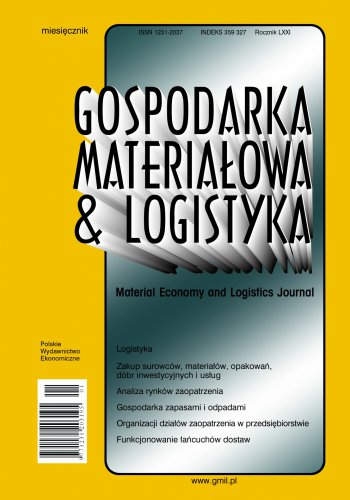The analysis of steel intensity in Polish economy by using different indexes
of the industry in an economy. Indicators of steel intensity are used at the level of an economy or particular industry sectors. The choice of indicators is therefore conditioned by the spatial scope of the analysis: macroeconomic or mesoeconomic approach. This paper presents the level of steel intensity of the Polish economy and particular sectors of the industry. The analysis shows the differentiation of the analyzed steel intensity by using particular indicators in an economy and industry sectors. Obtained ranges of the analysis were compared with the level of steel intensity in the EU and in the world. The analysis extends the knowledge of steel consumption in the economy and industry.
References
Bibliografia/References
Encyklopedia PWN, hasło: materiałochłonność, https://encyklopedia.pwn.pl/haslo/materialochlonnosc;3938584.html.
Eurostat. Enegry intensity. Eurostat Statistics Explained, https://ec.europa.eu/eurostat/statistics-explained/index.php/Glossary:Energy_intensity (10.05.2020).
Gajdzik, B. (2013). Changes of action strategies in metallurgical enterprises in time of economic crisis. Metalurgija, 52 (4), s. 569–572.
Gajdzik, B. (2012a). Przedsiębiorstwo hutnicze po restrukturyzacji. Dynamika zmian w krajowym sektorze hutniczym w latach 1992–2010. Gliwice: Wydawnictwo Politechniki Śląskiej, Monografia.
Gajdzik, B. (2012b). Restrukturyzacja przedsiębiorstw w warunkach destabilizacji otoczenia na przykładzie branży hutniczej. Warszawa: Wydawnictwo Naukowe Difin.
GUS (2004–2017). Gospodarka materiałowa 2004–2017, www.stat.gov.pl.
GUS (2005, 2010, 2015). Bilans przepływów międzygałęziowych w bieżących cenach bazowych (w 2005 r., 2010 i 2015 r.), GUS, www.stat.gov.pl
Raporty HIPH (2004–2018). Polski sektor stalowy, raporty roczne za lata 2004–2018, Hutnicza Izba Przemysłowo-Handlowa (HIPH).
Rębiasz, B. (2003). Analiza stalochłonności PKB w Polsce w latach 1992–2001. Gospodarka Materiałowa i Logistyka, 1, s. 15–18.
Rębiasz, B., Garbarz, B., Szulc, W. (2004), Wpływ dynamiki i struktury rozwoju gospodarczego Polski na krajowe zużycie stalowych wyrobów hutniczych. Hutnik — Wiadomości Hutnicze, 71, 9, 454–458.
Schurr, S. H., Netschert, B. C. et al. (1962). Energy in the American Economy 1850–1975. Journal Challenge, 10 (9), Taylor&Franics, https://www.tandfonline.com/doi/abs/10.1080/05775132.1962.11469448?journalCode=mcha20.
Święchowicz, M., Macioł, A., Rębiasz, B., Stawowy, A. (1999). Prognozowanie produkcji stali na podstawie analizy dynamiki rozwoju sektorów stalochłonnych przy użyciu metod inżynierii wiedzy. W: Komputerowo zintegrowane zarządzanie II konferencja: Zakopane, 11–13.01.1999: zbiór referatów pod red. Ryszarda Knosali. Warszawa: Wydawnictwa Naukowo-Techniczne, s. 421–426.
Wersty, B. (red). (1993). Analiza ekonomiczna w przedsiębiorstwie. Wrocław: Wydawnictwo Akademii Ekonomicznej.
Worldsteel (2005). Background Paper on: Steel Weighted Steel Industrial Production Index (SWIP), materiały konferencyjne, Economics Committee (ECON) Meeting 74, 13–14.09.2005, Monterrey, Mexico.
Worldsteel. (2012a). Indirect Trade in Steel. October, p. 3–5, www.worldsteel.org.
Worldsteel. (2012b). Indirect trade in steel. Definitions, methodology and applications, April, www.worldsteel.org.

